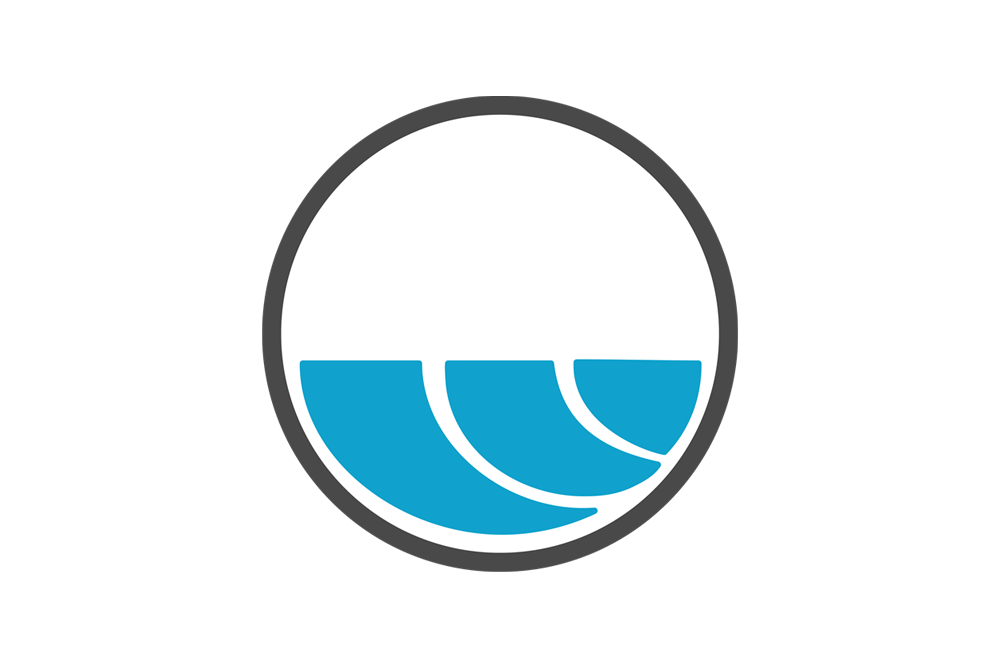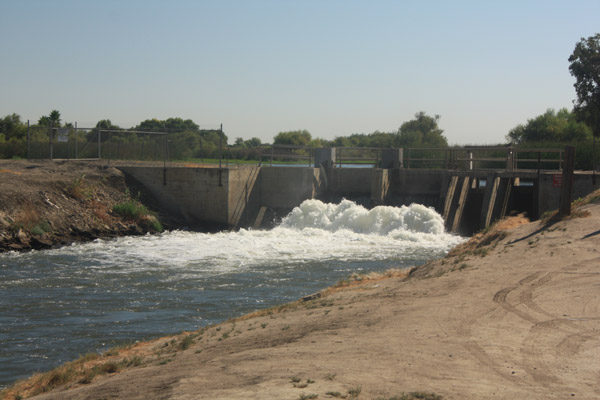The Exchange Contractors board of directors met at its headquarters in Los Banos on Friday, July 6, 2018. Hope everyone had a good 4th. I woke up without any water pressure. The pump was humming but there was no water coming up out of the well. We had a small BBQ with a dozen folks but since we have a pool to get buckets for various necessities and the neighbors let us tie into their system for the livestock everything worked out. Pistachio Pump came out the next day and it was good to know our water level is 13 feet. There are new almond and pistachio orchards and a twenty acre ranchette with a dozen homes and pressurized water system so I was concerned. They replaced a couple lengths of pipe, the pump and motor and a back flow valve. It could have been much worse.
The Exchange Contractors GSA met before the regular Ex Con board meeting. It’s formally known as the San Joaquin River Exchange Contractors GSA. Chairman Jim O’Banion called the meeting at 8:00 am and we joined together to salute the flag then introduced ourselves. Executive Officer Steve Chedester suggested Kim Brown, Columbia Canal Company was the actual chair for the GSA. As it turned out Brown is vice chair but in the interest of the #me too movement O’Banion was willing to share the gavel. The minutes were approved, the agenda approved and the finance matters approved.
Dr. Ken Schmidt presented the board with a draft Groundwater Sustainability Plan. He said there has long been groundwater research in Ex Con and this GSP is almost an extension of this work. He said he will keep the presentation under three-hours and there will be a test at the end. The draft document wasn’t available to the public which is fine as it is literally four inches thick with all the fold out maps and annotated appendix one could wish for. I will try to convey to you what Dr. Schmidt tells the board; but I’d double check if I were you. Groundwater flow coming into the GSA is from the southwest and some flows out of the GSA are going into the San Joaquin River. There was a good deal of data on aquifer  characteristics. The unconfined aquifer has a change of storage but he confined aquifer below the Corcoran clay layer does not. Schmidt said there are only two factors needed unlike the computer modeling that takes in dozens and dozens of parameters. Find the water level by getting out of the office and measuring is the one sure way to start and then keep an eye on the changes. Dr. Schmidt is known for his ability to interpret data and since there is so much data already available since even before the 1980s with the Mendota Pool Group he believes the Ex Con GSA is in pretty good shape. He was critical of the lack of technical people on the government technical committees. He said the US Geological Survey and the Department of Water Resources used to produce maps with great detail; hand contoured, half the size of a table. Now they are done by computers and take up half a 8 ½ x 11” piece of paper. Chris White, General Manager CCID said there has been a fight with DWR over computer models or conceptual modeling by humans. DWR finally relented and will except conceptual models. He said the Corcoran Clay layer runs from just east of Kerman to Traver and the entire western third of the Kings River Sub Basin has Corcoran Clay. They don’t have measurements below the clay accurate enough to truly prove a point in regards to SGMA.
characteristics. The unconfined aquifer has a change of storage but he confined aquifer below the Corcoran clay layer does not. Schmidt said there are only two factors needed unlike the computer modeling that takes in dozens and dozens of parameters. Find the water level by getting out of the office and measuring is the one sure way to start and then keep an eye on the changes. Dr. Schmidt is known for his ability to interpret data and since there is so much data already available since even before the 1980s with the Mendota Pool Group he believes the Ex Con GSA is in pretty good shape. He was critical of the lack of technical people on the government technical committees. He said the US Geological Survey and the Department of Water Resources used to produce maps with great detail; hand contoured, half the size of a table. Now they are done by computers and take up half a 8 ½ x 11” piece of paper. Chris White, General Manager CCID said there has been a fight with DWR over computer models or conceptual modeling by humans. DWR finally relented and will except conceptual models. He said the Corcoran Clay layer runs from just east of Kerman to Traver and the entire western third of the Kings River Sub Basin has Corcoran Clay. They don’t have measurements below the clay accurate enough to truly prove a point in regards to SGMA.
Anyway, he expects most of the change in storage to stay pretty much the same. He listed a couple of places where there was change but he said the below normal hydrologic year and tile drains will impact the results. Schmidt also went over a history of subsidence in the area. The recent drought was the biggest culprit and there is now subsidence along the Delta Mendota Canal. Nothing to the magnitude of the Friant Kern Canal but something to keep an eye on. The Eastside Bypass is dealing with subsidence. Note: The Triangle T Ranch was converted from rangeland to wall to wall nut trees in a white area by institutional investors. A lot of groundwater has been pum ped in the Red Top area that’s caused subsidence. Schmidt said it has been successfully addressed. Other parts of the Valley with subsidence are the area in Tulare County where the FKC is impacted and to my surprise Schmidt said the area around the Wheeler Ridge Maricopa WSD offices in Kern County. As for water quality there hasn’t been much of a problem but there is some poor quality water moving from Mendota towards Firebaugh. There will be more work needed to complete this area of study. Along the San Joaquin River the groundwater levels vary from above, below and equal to the channel levels of the River. One of the DWR questions is; does pumping groundwater pull flows from a stream? The US Bureau of Reclamation has been keeping an eye on this because of the salmon restoration program. He also warned the way nitrates are being dealt with is more political than scientific. He’d hate to see that apply to subsidence.
ped in the Red Top area that’s caused subsidence. Schmidt said it has been successfully addressed. Other parts of the Valley with subsidence are the area in Tulare County where the FKC is impacted and to my surprise Schmidt said the area around the Wheeler Ridge Maricopa WSD offices in Kern County. As for water quality there hasn’t been much of a problem but there is some poor quality water moving from Mendota towards Firebaugh. There will be more work needed to complete this area of study. Along the San Joaquin River the groundwater levels vary from above, below and equal to the channel levels of the River. One of the DWR questions is; does pumping groundwater pull flows from a stream? The US Bureau of Reclamation has been keeping an eye on this because of the salmon restoration program. He also warned the way nitrates are being dealt with is more political than scientific. He’d hate to see that apply to subsidence.
In summary Schmidt said the Ex Con GSA is well on its way. White asked the other managers to review the draft for their areas. Attorney Paul Minasian has some questions: could the good shape of the GSA be viewed as a way to take surface water away? So, could the Bureau tell Ex Con to pump more and deliver less surface water? It sounds possible but Schmidt wasn’t overly concerned.
Next the board considered an amendment to the MOU with Fresno County to clean up some maps and the board was fine with that. The GSA meeting was over.
Ex Con
 O’Banion opened the Ex Con meeting at 9:05am. The housekeeping items were dealt with. Chedester said the finance coverage could be more efficiently dealt with by one sweeping budget comparison as opposed to the usual line by line. If there is an item of interest or concern it could be pulled separately like a consent calendar. Chedester credited JoAnn White for the hard work needed to design this. The board approved the finance report and it look like it will work out fine.
O’Banion opened the Ex Con meeting at 9:05am. The housekeeping items were dealt with. Chedester said the finance coverage could be more efficiently dealt with by one sweeping budget comparison as opposed to the usual line by line. If there is an item of interest or concern it could be pulled separately like a consent calendar. Chedester credited JoAnn White for the hard work needed to design this. The board approved the finance report and it look like it will work out fine.
Water Master Adam Hoffman gave his report saying in mid-June the Bureau changed the CVP allocation from 45 to 50 percent. Ex Con is taking water from the DMC and the Mendota Pool. SJR flows are only about 100 cfs at the Pool if I heard correctly. There seems to be greater channel lose than expected. Shasta and San Luis Reservoir are above average for storage at this time. Millerton and Pine Flat Lakes are also a bit above normal. Total Delta inflow of 13,000 cfs is mostly from the Sacramento River. The federal Jones Plant is running at four pumps instead of the expected five. The state’s Banks Plant is now pumping again after repairs to the California Aqueduct. Earlier temperatures were below normal but that’s over as things are rising.
Chedester gave his report saying it should be shorter as he’s been trying to keep the board more informed through the month. No settlement agreements with the State Board yet but an unimpared flows through the Delta proposal from them is expected. Minasian said 45 percent from January to June is expected. Chedester said the technical committee is working on the Cooperative Operations Agreement between the CVP and the SWP. The Bureau can call an off ramp if things don’t improve. There was nothing new on the Water Fix enforceability yet to be resolved. How the workgroup works has yet to be resolved. The Restoration Project has language Ex Con wanted included that will cost another $25 million or so. JoAnne White updated the board on water transfers. The San Joaquin Valley Water Infrastructure Authority may be shifting its focus from Temp Flat and Ex Con isn’t comfortable about sending more money to the Infrastructure Authority. The possibility to get $171 million from the California Water Commission is still alive should someone want the money with  all the strings attached. Ex Con and the investor group is wisely keeping that on the table just in case. Chedester and others will be heading back to Washington DC to talk about biops and Water Bonds. Title transfer on the Friant Kern Canal and a similar deal in Contra Costa County from the Bureau to the agencies is of interest to Ex Con. Later today there will be a luncheon with Congressman Jim Costa. In Washington there will be meetings with the Department of Interior’s Austin Ewell and the Valley’s congressmen. Maybe a meeting with Senator Diane Feinstein. That was the report.
all the strings attached. Ex Con and the investor group is wisely keeping that on the table just in case. Chedester and others will be heading back to Washington DC to talk about biops and Water Bonds. Title transfer on the Friant Kern Canal and a similar deal in Contra Costa County from the Bureau to the agencies is of interest to Ex Con. Later today there will be a luncheon with Congressman Jim Costa. In Washington there will be meetings with the Department of Interior’s Austin Ewell and the Valley’s congressmen. Maybe a meeting with Senator Diane Feinstein. That was the report.
Next Chedester talked about the 2018 Work Plan. Consultant Adan Ortega helped to develop this and an upcoming strategic plan. San Luis Canal Company General Manager John Wiersma expressed a good deal of confidence in the progress being made. Ortega explained some of the objectives can be performed by the individual entities and some can be dealt with as one unified voice. He said things are colored coded to show how far the parts have moved. The board expressed its support.
The SJVWIA was never going to build Temperance Flat Dam. Instead a MOA to form a JPA of potential investors is in the offering. The membership at this time looks like San Luis Delta Mendota, Ex Con, Westlands Water District, the City of Fresno and Friant Water Authority. The focus is to work with the USBR and avoid conflicting messages. No funds will be spent without full board approval and this new group will automatically dissolve in a year unless the members wish to continue. White reported the Bureau found money to pay for the federal feasibility study although the JPA members will have to donate staff time. Chedester said there has been good changes from the original document and the board authorized Ex Con to enter into the MOA. Good news.
Provost & Pritchard engineer Rick Iger reported the Bureau has started a survey to see how much subsidence is impacting the DMC and the DWR is checking the Eastside Bypass also. There will be monthly calls between GSAs with subsidence experts available to help. Iger said Schmidt’s call for greater detail is being incorporated into the study.
Iger then spoke about how the American Society of Engineers gave P&P an award for the Los Banos Creek Project. Congrats. Moving on Iger said a strategy on how to approach water rights on the LCP has been prepared and the Bureau is considering it. There is testing and permits to continue pursuing but this could be a good addition to Ex Con’s water portfolio.
Consultant David Cory gave his report about the State and Regional Boards. He said the Eastside of the San Joaquin order applying to Irrigated Lands Program. If I understand correctly the state is once again trying to prefect one cookie cutter to cover the entire state. This doesn’t work for most of the growers in the state. Groundwater monitoring is expected by the Regional Board for nitrate and other constituents for drinking water wells. CCC GM Randy Houk asked if this wasn’t already being covered by SGMA. Trying to coordinate those efforts without redundancy is the challenge. Houk was upset and asked if anyone says no to the Regional Board. Cory said Houk was welcome to come with him and say no. Houk’s point was the state is looking to require sediment studies by each field. That will require a registered engineer and eventually the costs are going to be prohibitive. The state is getting after more and more information and offering less and less autonomy. It is willing to work behind closed doors with the enviro justice. Minasian said the chaos theory requires everyone to resist at once or the state will pick off growers one at a time. Cory also said the CV Salts portion of the Regional Board is losing institutional memory with senior staff retiring. Brown asked if Cory expects the make up of the Regional and State Board members should remain constant. Cory said he believes it will.
Chedester then gave the legislative report saying the bill by Assemblywoman Laura Freedman’s latest attempt to screw farmers by coming up with a bill to empower the state to declare a section of river wild and scenic by an individual. That has been tempered to the better but it is still a bummer. On the fed side there is money for the SJR restoration program in the budget. Also, NMFS would be consolidated into the Department of Interior which would be very good if the bill passes.
Minasian said most of his stuff will be in closed session. However, a hint, on the Delta Tunnels should the Bureau and State have a levee fund in case of failure? I don’t know, I don’t stick around for closed session. There’s something else about the Clifton Court Forebay that involves the Tunnels and closed session. He said a very valuable discussion about the CVP will take place in closed session. Houk asked about the State Lands Commission. Minasian said CCID received a letter asking for $3,000 to pay for some permit connected to SJR Restoration. More than a year ago Ex Con received a letter stating the permit wasn’t needed. Minasian said it is a perfect example of bureaucratic heaven/hell with the one hand not knowing what the other is doing. He just hopes the two bureaucrats causing this mess never meet at the water cooler.
Four entities reports: Houk and Wiersma are both saying deliveries are full speed ahead. However, SLCC is in jeopardy from subsidence. Jeff Bryant, a fine gentleman and GM of FCWD said he spends a lot of time dealing with storm water. There can’t be spill over into the wildlife refuges. White said this past June was heavy but not as much as in the past. There has been a couple thousands of acres converting from row crop to permanent crop. As those orchards mature water use will increase.
Under informational matters the CAST event will be later this month. This is a program going on 18 years where Ex Con takes handicapped kids fishing.
The meeting then went into closed session.
DISCLAIMER OF RESPONSIBILITY; Waterwrights.net strives to provide his clients with the most complete, up-to-date, and accurate information available. Nevertheless, Waterwrights.net does not serve as a guarantor of the accuracy or completeness of the information provided, and specifically disclaims any and all responsibility for information that is not accurate, up-to-date, or complete. Waterwrights.net’s clients therefore rely on the accuracy, completeness and timeliness of information from DAW entirely at their own risk. The opinions expressed in this report are those of the author and do not represent any advertisers or third parties.
ALL RIGHTS RESERVED. Copyright 2018 by Don A. Wright No part of this publication may be reproduced, stored in a retrieval system, or transmitted in any form or by any means, electronic, mechanical, photocopying, recording, or otherwise, without the prior written permission of DAW.
SAN JOAQUIN RIVER EXCHANGE CONTRACTORS WATER AUTHORITY
Main Office: 541 H Street, P.O. Box 2115 Los Banos, CA 93653 Office 209/827-8616 www.sjrecwa.net Email: contactus@sjrecwa.net
The Exchange Contractors cover almost a quarter of a million acres in Fresno, Madera, Merced and Stanislaus Counties.
Mission Statement
The Exchange Contractors Water Authority mission is to effectively protect the Exchange Contract and maximize local water supply, flexibility and redundancy in order to maintain local control over the members’ water supply.
Board
James O’Banion-Chair Central California Irrigation District, Chris Cardella-Vice Chair Columbia Canal Company, James L. Nickel-Treasurer San Luis Canal Company, Mike Stearns-Director Firebaugh Canal Water District
Staff
Steve Chedester-Executive Director, Adam Hoffman-Water Master, Joann White-Administrative Assistant, Patty Baldini-Office Assistant, Paul Minasian-Attorney
History
The San Joaquin River Exchange Contractors hold some of the oldest water rights in the state, dating back to the late 1800s. The rights were established by Henry Miller of the legendary Miller and Lux cattle empire. In 1871, Henry Miller constructed canals to divert water from the San Joaquin and North Fork of the Kings Rivers for irrigation of his vast acreage. Today, several of the original Miller and Lux canals are operated by the Exchange Contractors.
Although Henry Miller’s canals served the irrigation needs of his estate in the western portion of Fresno, Madera, Merced, and Stanislaus counties, in order for more growth on the east side of the San Joaquin Valley to occur, more water was needed. In 1933, the United States Department of Interior undertook the Central Valley Project, a vast undertaking to build dams throughout the great Central Valley including the Sacramento, American and San Joaquin Rivers. When construction of the Friant Dam (north of Fresno) was under consideration, feasibility studies showed that irrigation development of the Friant Project between Chowchilla and Bakersfield depended upon water being diverted from the San Joaquin River at Friant Dam and brought to the east side of the valley, via the Friant-Kern Canal.
To accomplish this, the government asked the heirs of Miller and Lux to agree to “exchange” where they receive their pre-1914 appropriative and riparian water from the San Joaquin and Kings Rivers for guaranteed deliveries of “substitute” water from the Sacramento River by means of the Delta-Mendota Canal and other facilities of the United States. This agreement, known as the “Exchange Contract,” along with the accompanying “Purchase Contract,” were reached in 1939 and that led to the name “San Joaquin River Exchange Contractors.” In normal years, the Exchange Contractors are guaranteed 100% of their contractual water allotment (840,000 acre feet) and in critical years the amount is 75% (650,000 a/f).
The Exchange Contractors, however, did not abandon their San Joaquin River water rights. Instead, they agreed not to exercise those San Joaquin and Kings Rivers’ water rights if guaranteed water deliveries continued through the Delta-Mendota Canal or other facilities of the United States. In the event that the Bureau is unable to make its contracted deliveries of substitute water to the Exchange Contractors, the Exchange Contractors have

































